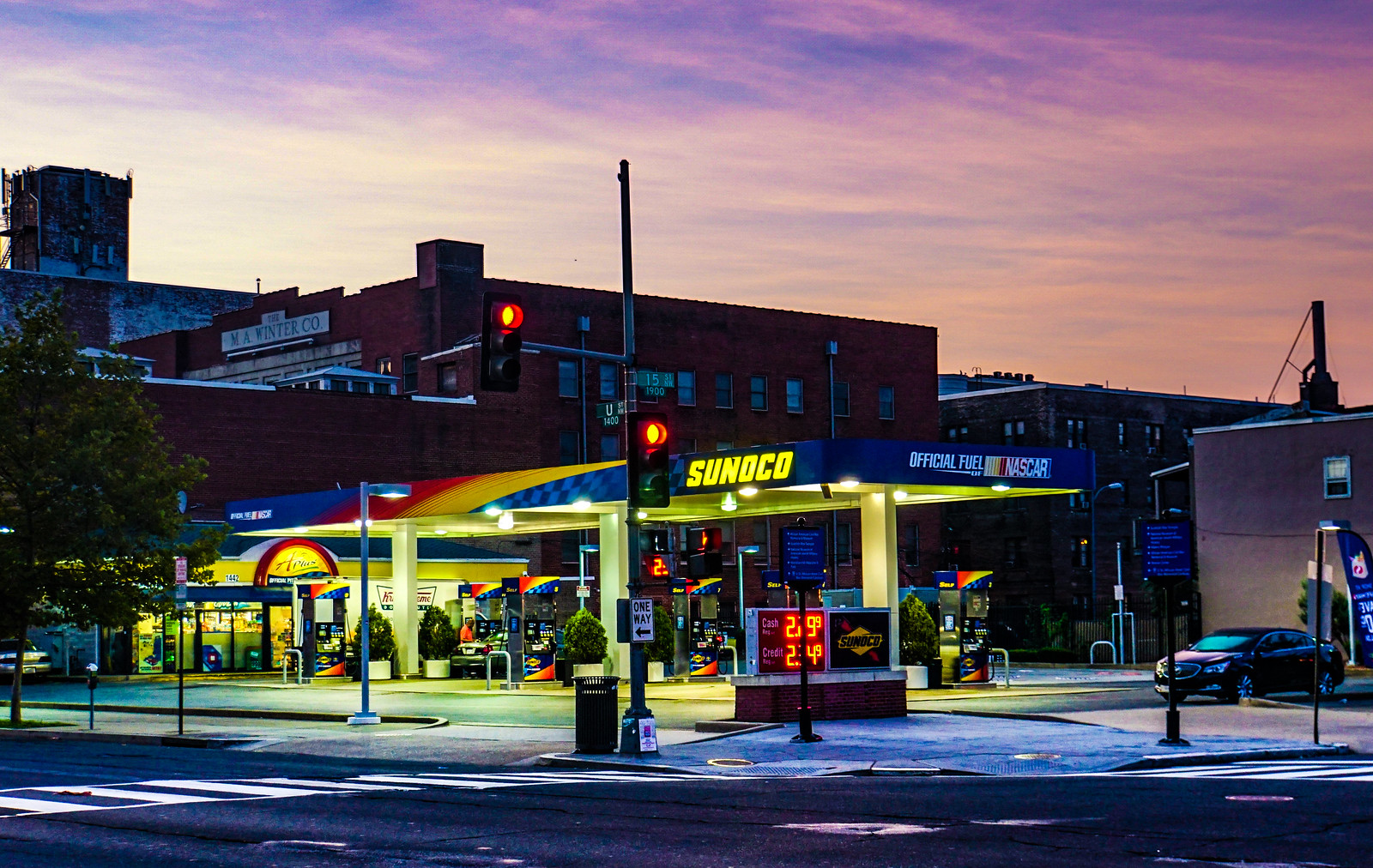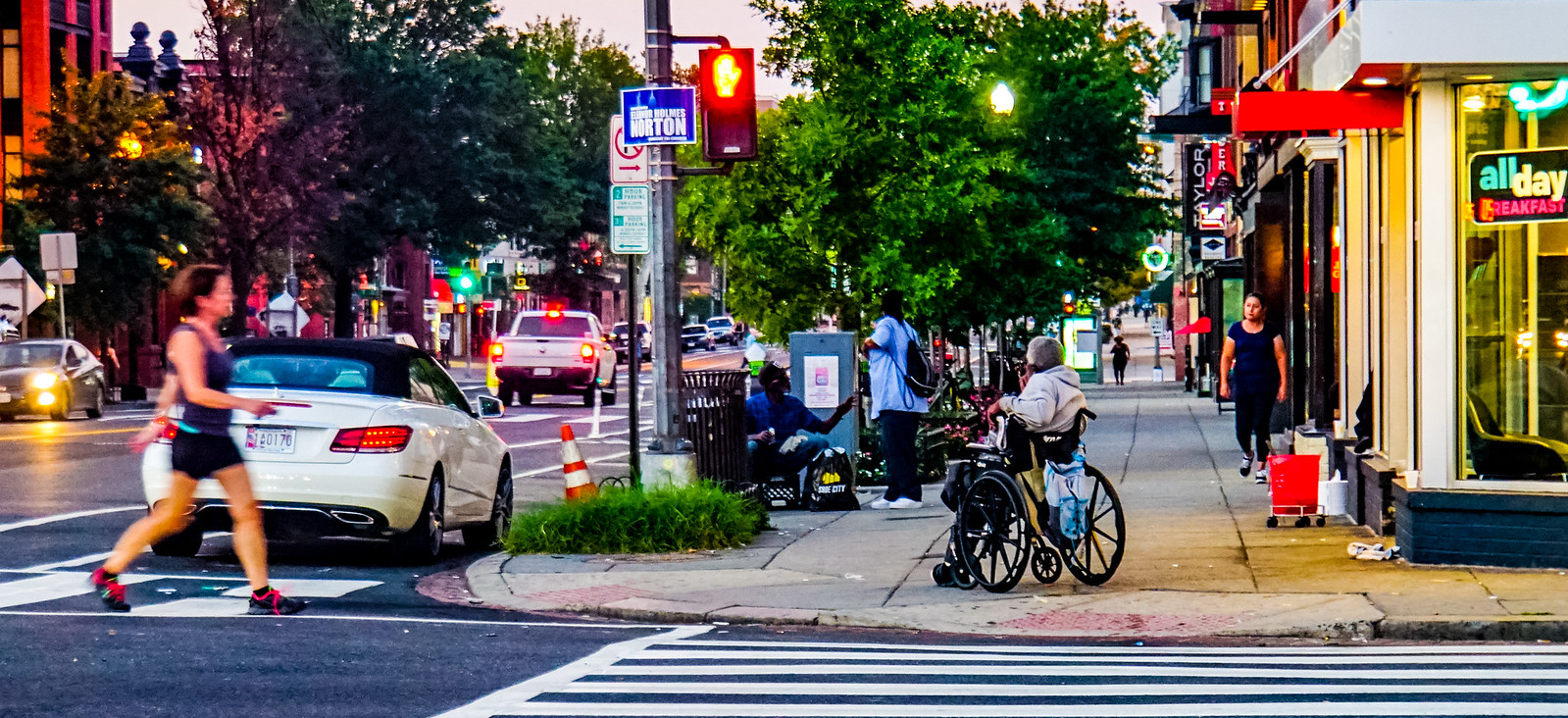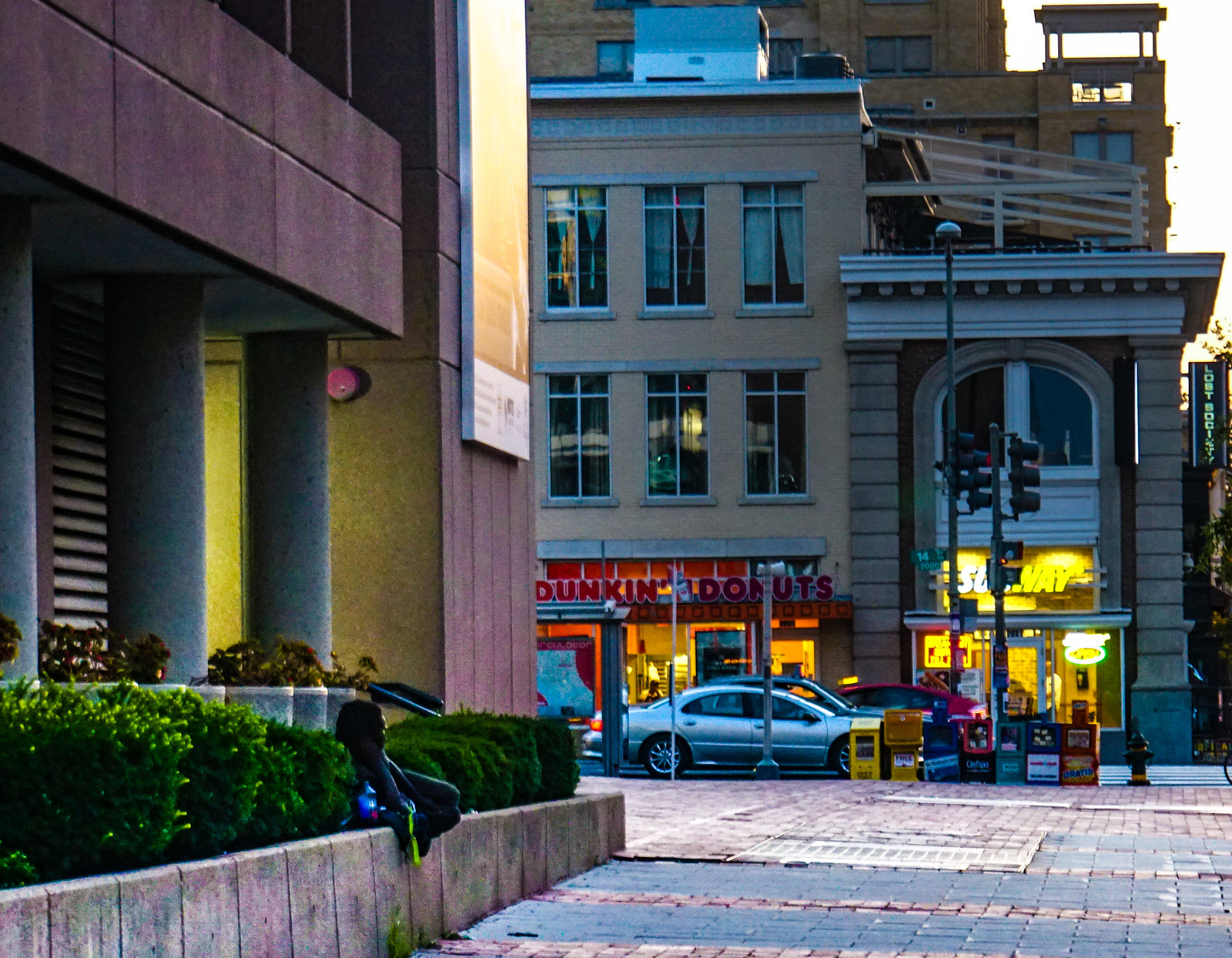


I took these photographs at dawn, at historic 14th Street, NW and U Street, NW.
I was intrigued by this post on Greater Greater Washington (@ggwash) that used a photo that I took of the changing/”modernizing” of 14th Street, NW, and the comments on the piece. They caused me to want to show a different version of the street, the version that I see early mornings when I walk the city that I love so much.
This is what this corner looked like in 1950 (although it’s probably closer to the 1960’s), before it was destroyed following the assassination of Martin Luther King, Jr. Notice what’s changed, and maybe what hasn’t in 60 years.
While I was there, I also took a photograph of the famous gas station at the top of this post, at 15th and U Streets, NW. It was once operated by Marion Barry’s Pride, Inc:
A nonprofit venture committed to black economic development, Pride established businesses in ghetto areas and staffed them with young, unemployed black men—often high-school dropouts, often former criminals, and always ignored by society. These “street dudes” (as the newspapers liked to call them) were not a promising group to build on, but they were Marion Barry’s core constituency and they needed the helping hand. Like the bus mancott and the Free D.C. block parties, Pride proved Barry’s commitment to helping those who required the most assistance. – Washington City Paper
Here are the rest of the photos taken at dawn. If you’re interested in the growth and health of cities, take a look at the comments on the post, and how the visuals here impact your perception and thinking.
The gentrification of 14th St was handled terribly. It went from crack houses and pawn shops straight to high-end tapas restaurants, furniture stores, and other businesses that only appeal to the 1%. Walk down 14th and you will run into super preppies who work in finance, women who wear little black dresses and pearls to the gym, BMW and Tesla owners, and not a single black person except for the cashiers and waitstaff. 14th St is a great example of of how to completely displace the working class by developing without a plan. – link
[miniflickr photoset_id=”72157673324674525″]